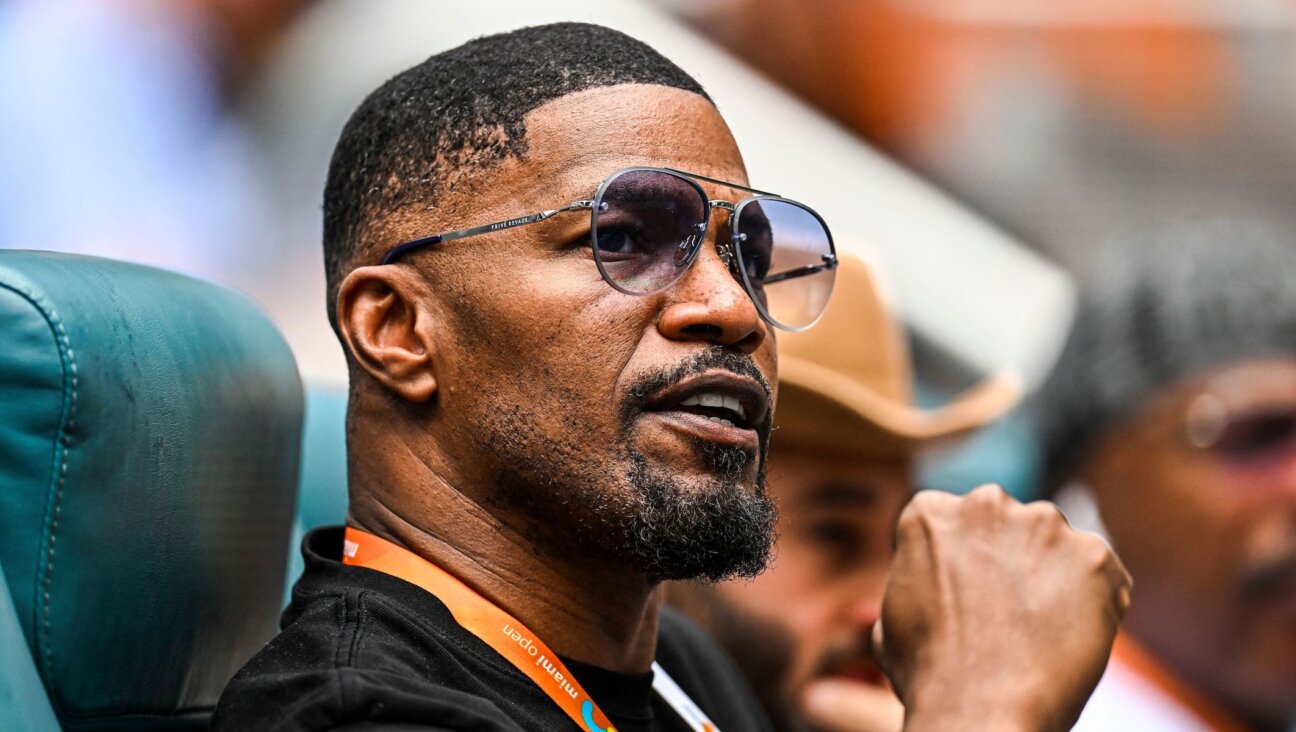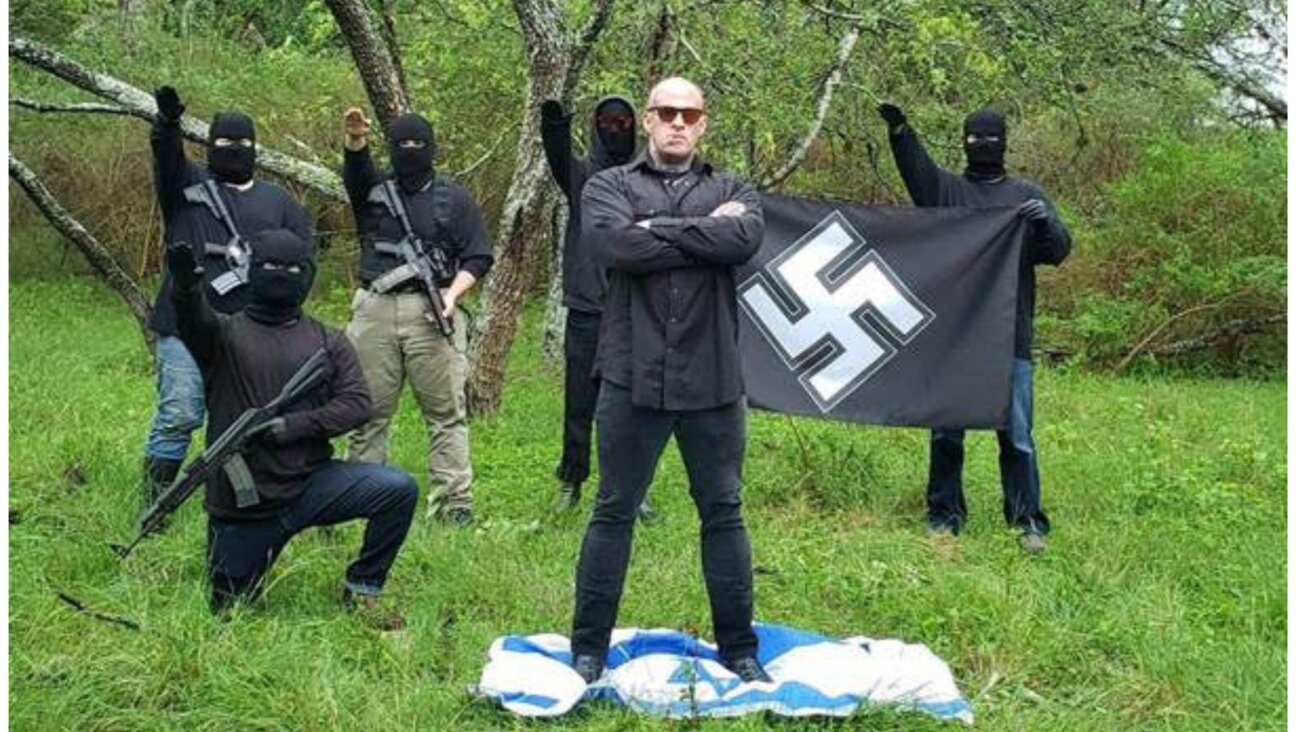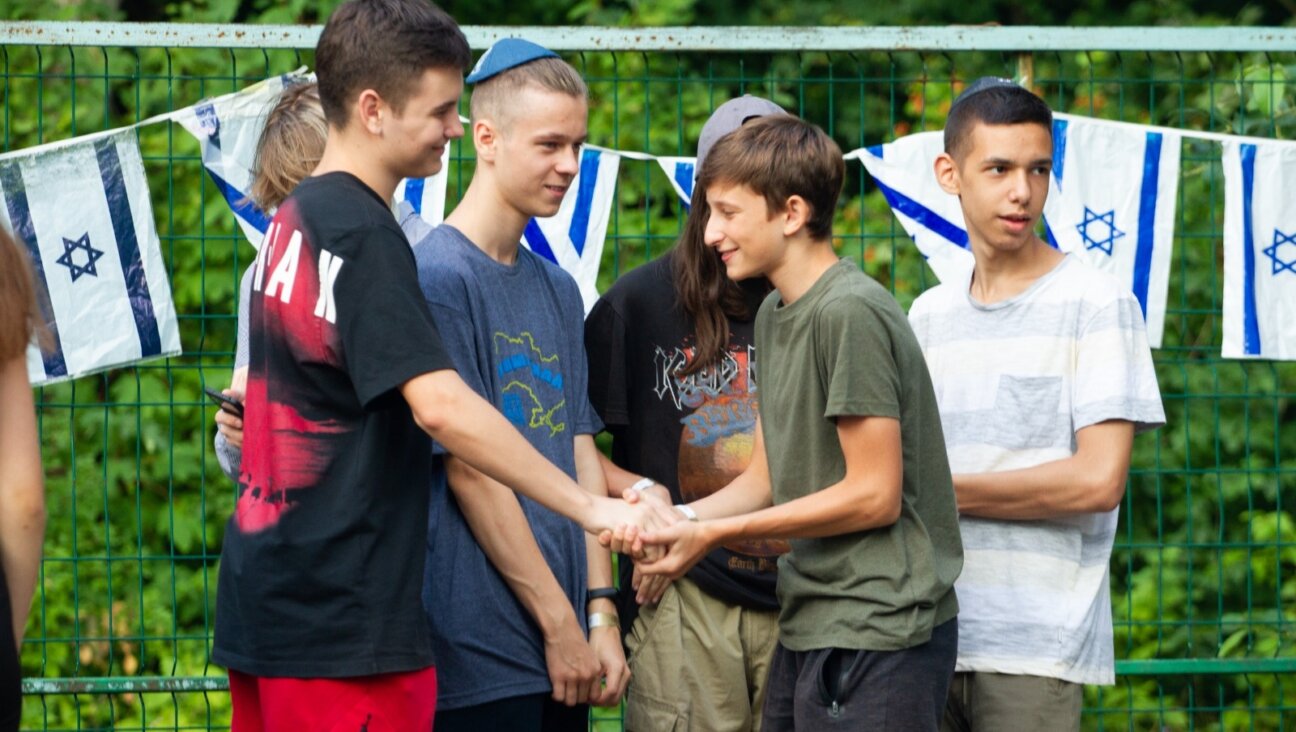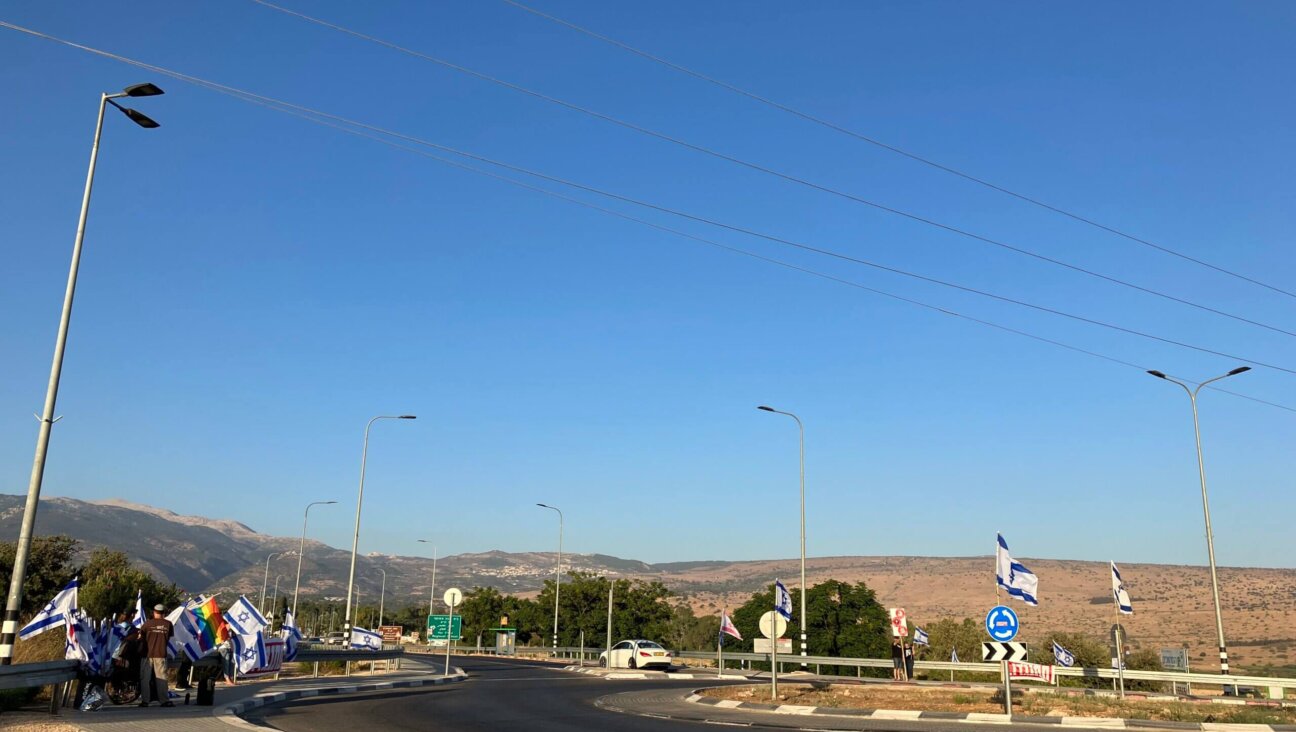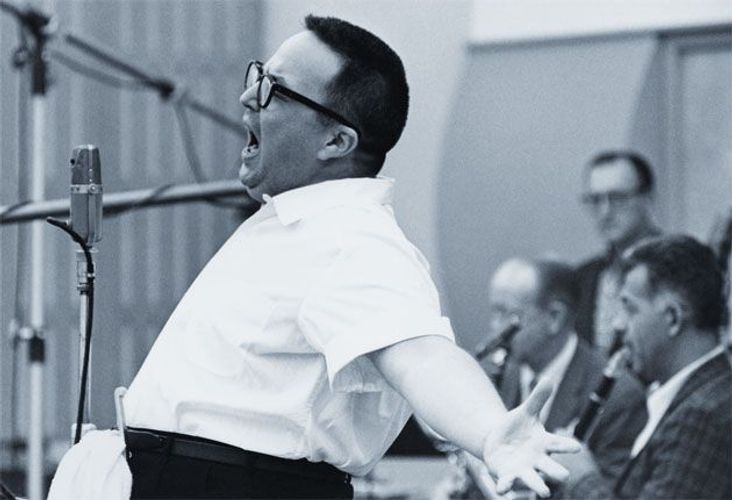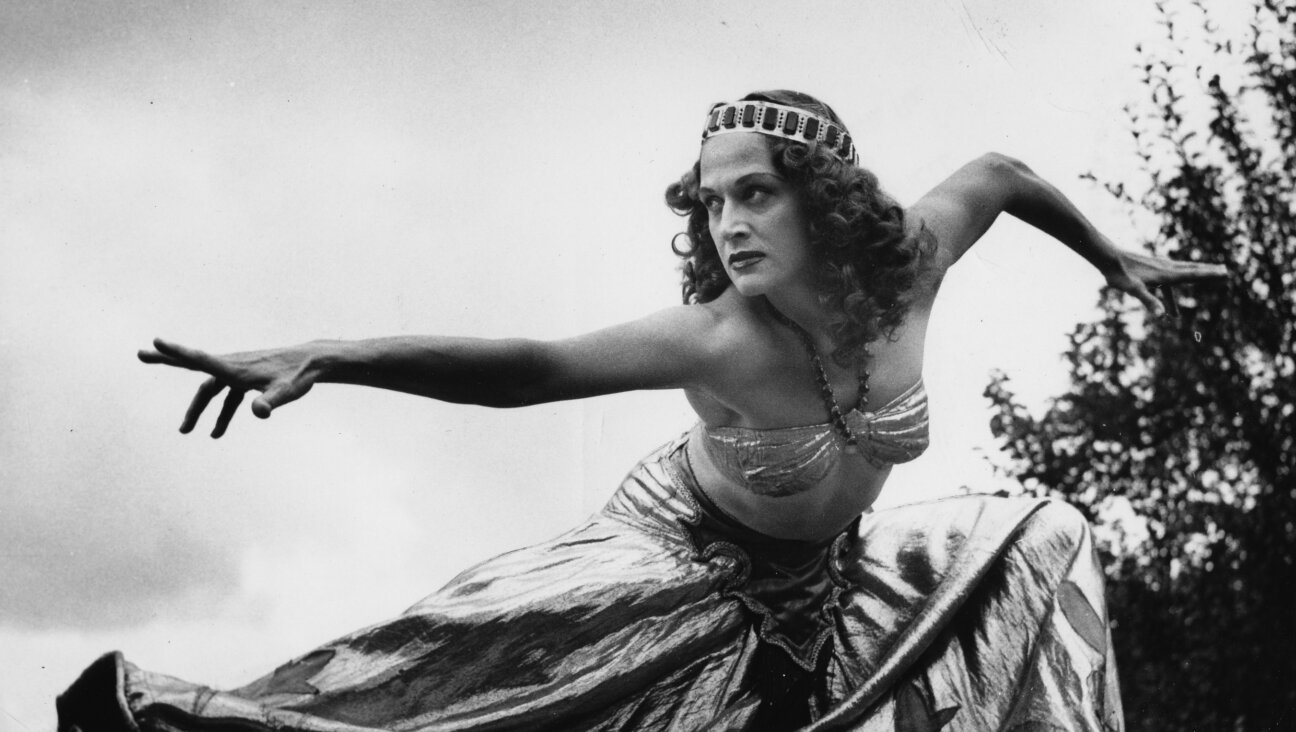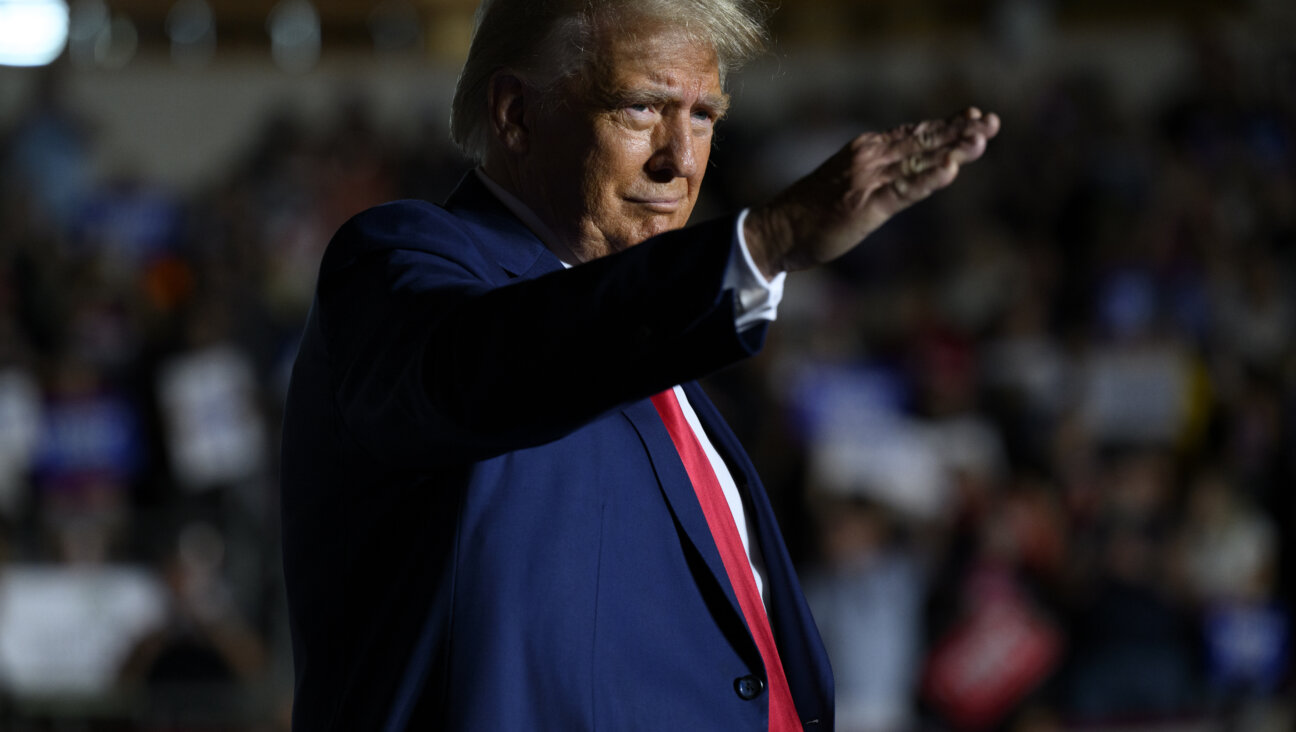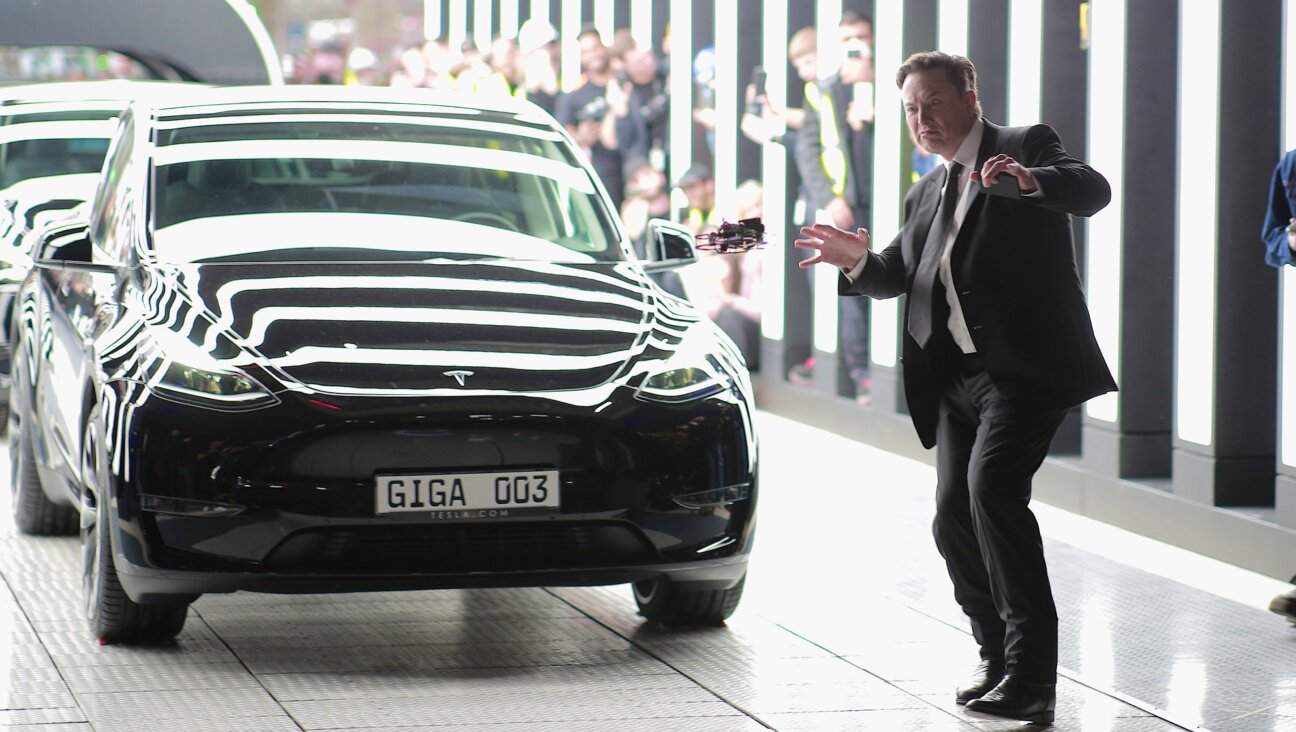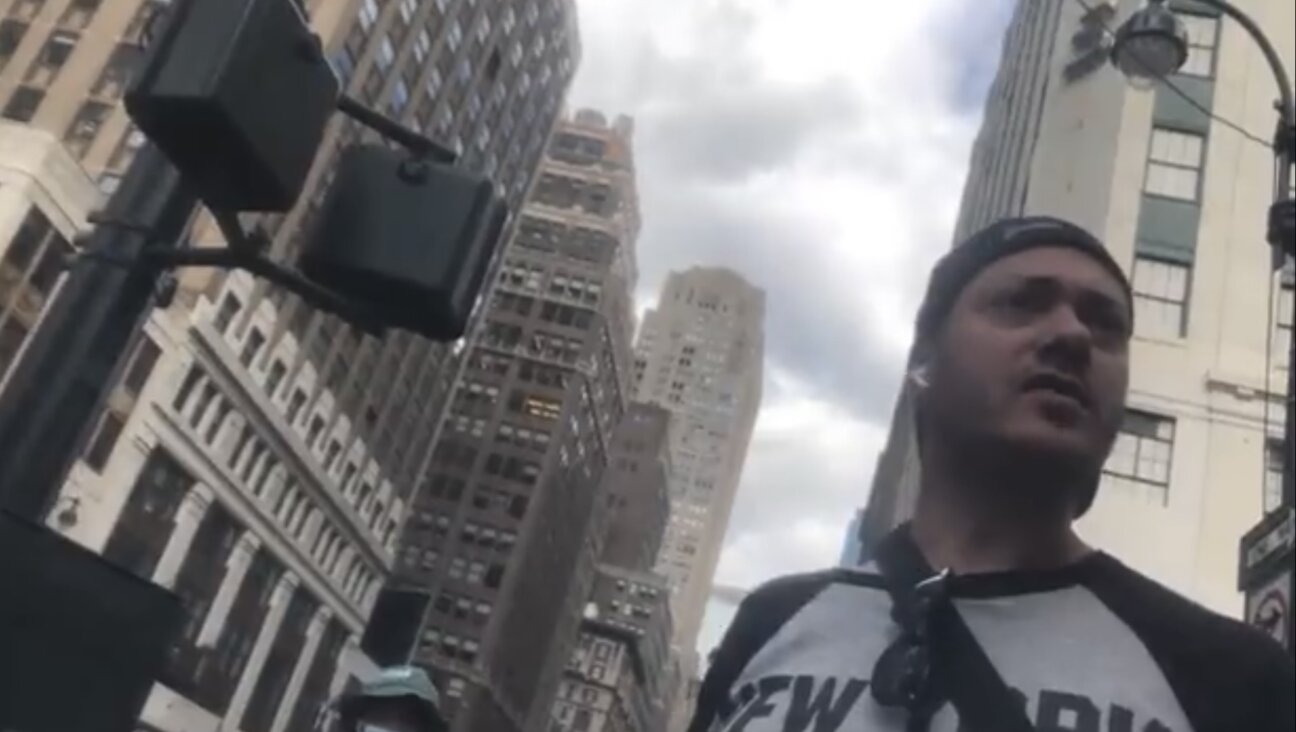Trumpets, drums and shouts of ‘Shame, shame’ — scenes from the raucous protests on the streets of Israel
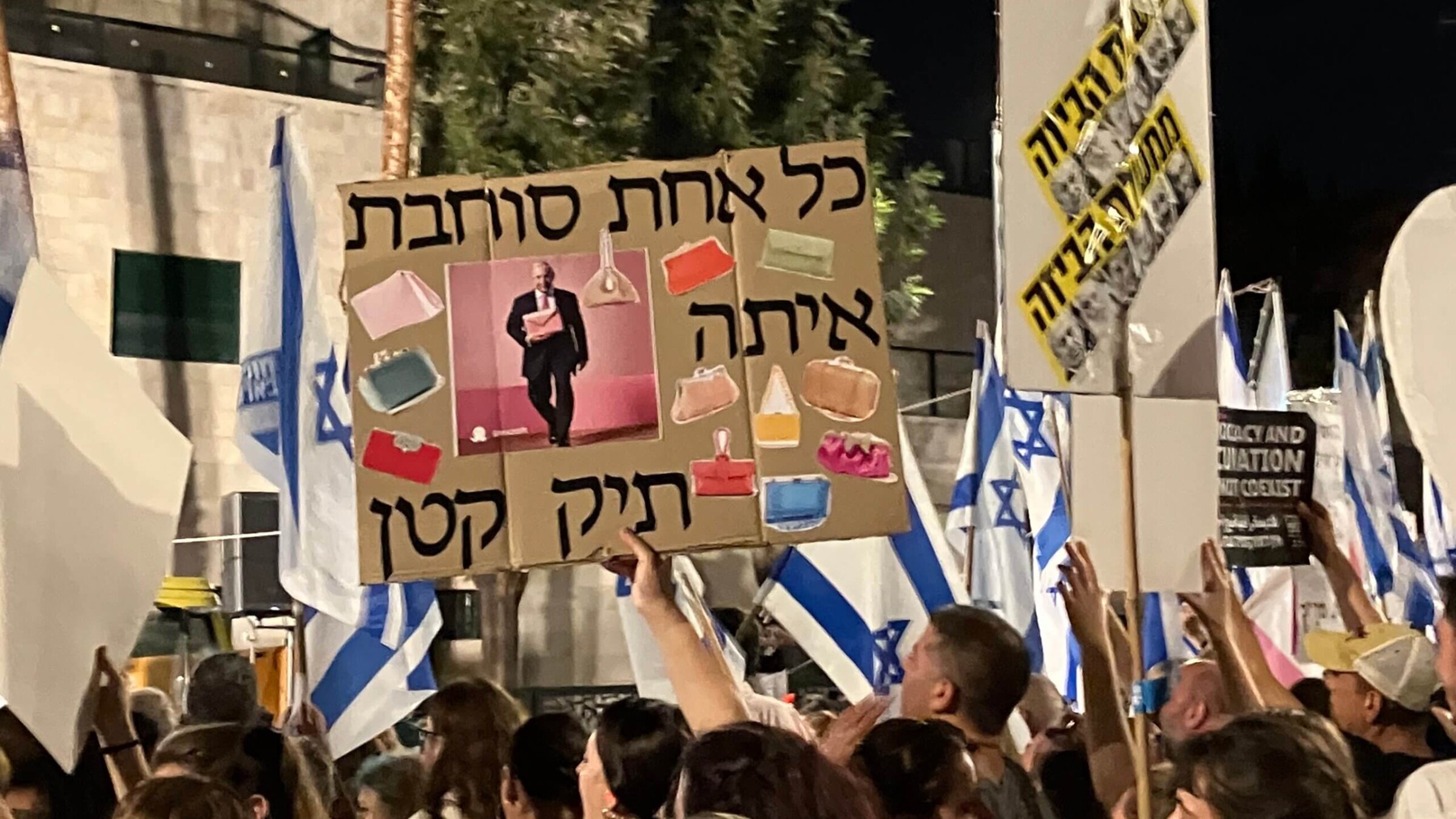
Protestors gather against Israel’s Netanyahu-led government’s judicial overhaul. Photo by Mira Fox
JERUSALEM — In some ways, the anti-government protest in Jerusalem on Saturday night felt like a Purim spiel.
Protest leaders stood on the bed of a truck, equipped with loudspeakers, parked outside of the president’s residence in the Rehavia neighborhood of Jerusalem. Each time they said the name of a minister they detested, the crowd of thousands erupted, drowning out the speech with noisemakers — drums, pots and pans they brought from home, or shrill plastic horns in an array of bright colors. Sometimes, they screamed, “bushah, bushah,” which means “shame.”
A kind man near me in the crowd was passing out green foam earplugs, which I was grateful to accept. I’d landed in Israel just a few hours before the demonstration, which a hotel worker had mistakenly told me would be by the Knesset, Israel’s parliament building. Instead, after a fruitless wander, I found a middle-aged couple with a protest placard in Gan Sacher, Jerusalem’s central park, and walked with them most of the way.
I lost the couple when they paused to take a call from their daughter, but by then I could follow the sound of the drums.
I came here to cover the situation on the ground after the Knesset passed a controversial law limiting the power of the country’s courts. The protests, which have been at least weekly since January in response to the government’s planned judicial overhaul, swelled enormously after the vote two weeks ago, and were met by police violence.
Now, as the courts wait to hear arguments about the law limiting their own power in September, the country stands on the precipice of a constitutional crisis.
When I arrived, students with megaphones were leading chants in a circle, accompanied by noisemakers in the crowd. Later, everyone directed their attention to speakers standing on the bed of a truck. pic.twitter.com/yHvZfyjJxk
— Mira Fox (@miraefox) August 6, 2023
But Saturday’s demonstration in Jerusalem was peaceful. When I arrived, passing through a police barrier monitored by a bored-looking female officer, I wove through the crowd until I got to the center, where there was a drum circle of sorts, but with marching-band drums instead of bongos.
A handful of Israelis in their mid-20s carried megaphones, which can be found on sale in Israeli supermarkets these days, thanks to the constant protests. They marched inside the drum circle, leading chants and songs. Each megaphone was plastered with bumper stickers: slogans like “FCK BEN-GVIR,” referring to Itamar Ben-Gvir, Israel’s hawkish National Security Minister, or rainbow LGBTQ+ flags.
These protests have been occurring across Israel every Saturday night after Shabbat ends for 31 weeks. After the crowd had gathered, the drum circle dissolved, ceding the focus to the speakers. “The government is “racist, misogynistic, homophobic and totalitarian,” cried one into the microphone, as the crowd shouted and deployed their noisemakers in response. “What’s happening today in the government is not our Judaism.”
“Jerusalem must be a pluralistic city,” the speaker continued. “It’s the gateway to the country of Israel.”
A diverse Israel, marching (mostly) together
The crowd on Saturday encompassed a wide range of ages and affiliations. There were university students marching alongside people who looked to be at least in their 60s, and schoolchildren who sat on a fence near their parents so they could see better. American immigrants and Israelis, secular activists and religious ones all mixed together.

The protests are composed of numerous well-organized sub-groups, each identifiable by their T-shirts, which could be obtained at one of a dozen folding tables at the edges of the demonstration. Academics wore shirts reading “without democracy, there’s no academia,” and soldiers displayed slogans about serving in the military to protect democracy, not autocracy. High schoolers wore purple shirts expressing the sentiment that older generations are ruining the country for younger ones.
Some signs bore caricatures of Netanyahu, or complained of his corruption, One read, “The government is not an institution for the rehabilitation of criminals,” referring to corruption charges against the prime minister.
Others complained about what protesters feel is the misuse of Judaism in justifying the government’s actions and its social conservatism. “Yes to Torah, no to dictatorah,” read one. (The pun works better in Hebrew.) Others carried rainbow flags in addition to the blue-and-white Israeli flag.
Still, despite the screams of “shame,” the mood in the crowd was ebullient; most people were smiling and greeting each other. (“My god, you haven’t changed one bit!” I heard one American woman exclaim as she hugged someone.)
“Jerusalem has sort of a family feel,” said Nathan Slonim, who I met as the protest broke up. He works in tech in Tel Aviv, where he said the protests are “more raw.”
Sometimes, he said, there are groups of children drawing slogans on the sidewalk in chalk, or making their own signs — and just coloring — at a stand that offers markers and blank placards. It gets them engaged, and he and his wife see kids at the demonstrations asking questions about democracy and government.
“Some days it’s very pessimistic, some very optimistic,” a middle-aged man in a yarmulke told me. “When I go to the protests, I feel optimistic. These are the best people in the country.”
“And,” he added, as someone pulled him away before he could tell me his name, “you meet friends!”
A Jewish and democratic Israel — but whose Judaism?
While there were plenty of people in the crowd wearing kippahs, missing from the crowd, notably, were the Haredi citizens of Jerusalem.
As I wandered through Gan Sacher, the playground was full of children. Joggers crowded the trails and people were gathering up the remains of Shabbat picnics as darkness fell. But while many of the park’s visitors appeared to be secular, at least half were visibly religious, enjoying the cool evening blithely unconcerned with the drums and screams in the next neighborhood over.
That isn’t surprising. Netanyahu’s coalition, which currently leads the government, depends on an alliance with right-wing Haredi political parties. (Though not all Haredi Jews in Israel vote for Haredi parties — and around 10% don’t vote at all — the majority are associated with the right.) While some of the speakers at the protest talked of finding middle ground with the Haredim, others spoke often about the millions of shekels of government funds given to Haredi institutions, and were met with shouts of “shame, shame!”
Slonim said that he sees the protests about the courts as too narrow. “We don’t need this fake issue,” he said; the real issue Israel is confronting is “unity.”
His thoughts echoed a sentiment I’ve heard from numerous Israeli friends who I know from my time living in Jerusalem. (“Israel is now two countries,” one, who I know from working at Israel’s Burning Man, told me in a text.) The current discord is exacerbating issues that had seemed settled: divisions between Sephardim and Ashkenazim; the residents of cities and settlements; the religious and the secular.
Still, Slonim said, he’s “naively optimistic.”
And even though one of the speakers at the demonstration cried that “we no longer love our homeland,” the march ended on a patriotic note. A singer with a deep baritone took the stage to lead the crowd in HaTikvah, the Israeli national anthem.
A protest, divided
As the main gathering of the protest marched away from the presidential residence and eventually dissolved, one smaller group remained. They had set up their own circle of drummers at the far end of the gathering, and a large banner that read, in English, Hebrew and Arabic: “A nation that occupies another nation will never be free.”
Standing around it was a smaller group, carrying black signs that read “Palestinian lives matter” and “Democracy and occupation cannot coexist.”
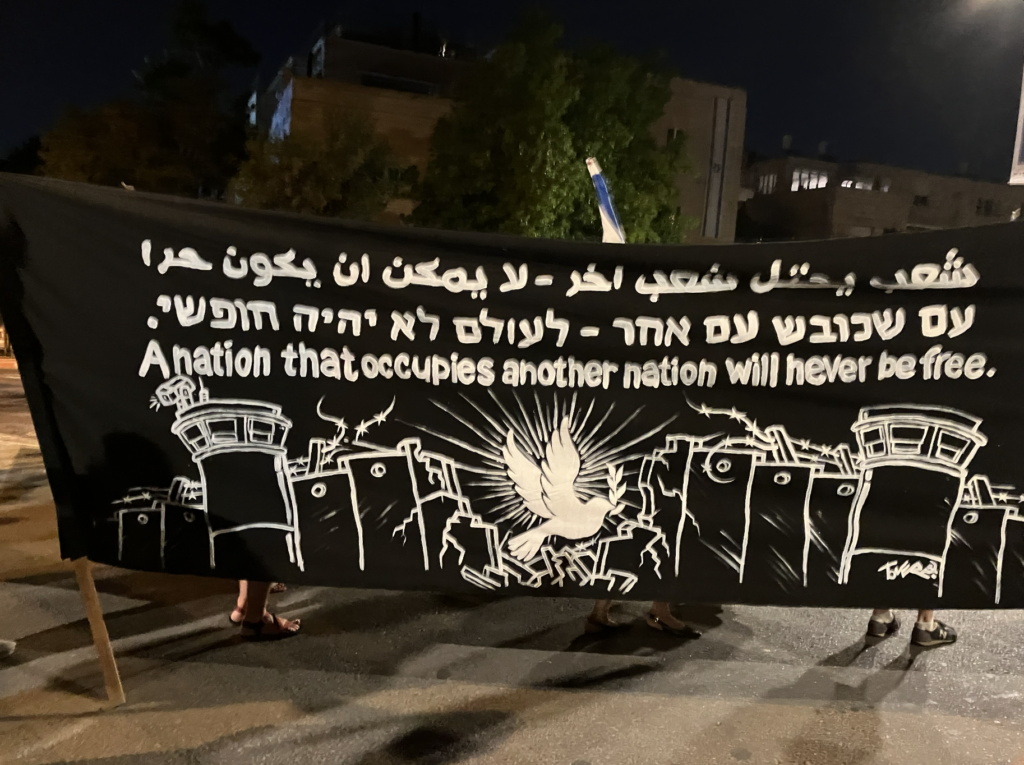
I asked an older Israeli woman in the group, who didn’t want to give her name for fear of reprisal, whether the pro-Palestinian group was separate from the main protest, and she said it was complicated. Sometimes they march with the main group, but sometimes they keep to their own side.
She and her fellow protesters, she said, view the occupation and the governmental shift that the main demonstrations are protesting as part of the same issue. In both cases, she said, the government is seeking increased power and control, and trying to mold Israel into a homogenous, totalitarian state.
But many of the protestors don’t see it that way, even as they chant about the government’s racism. “They’ve been in the army, so they’ve committed this violence against Arabs themselves,” she said. “It’s a really hard dissonance.”
Still, she thinks protestors are finally moving toward her perspective. In Tel Aviv, two weeks ago, when the government passed the bill limiting the courts’ power, police violently cracked down on protests. They shot water cannons into the crowds and tackled protestors; mounted officers rode into the protest, knocking over civilians.
“I think they’re starting to understand that if this violence can be done to them then this is being done every day to Arabs,” she said. But, she added, “they don’t want to see the connection.”

